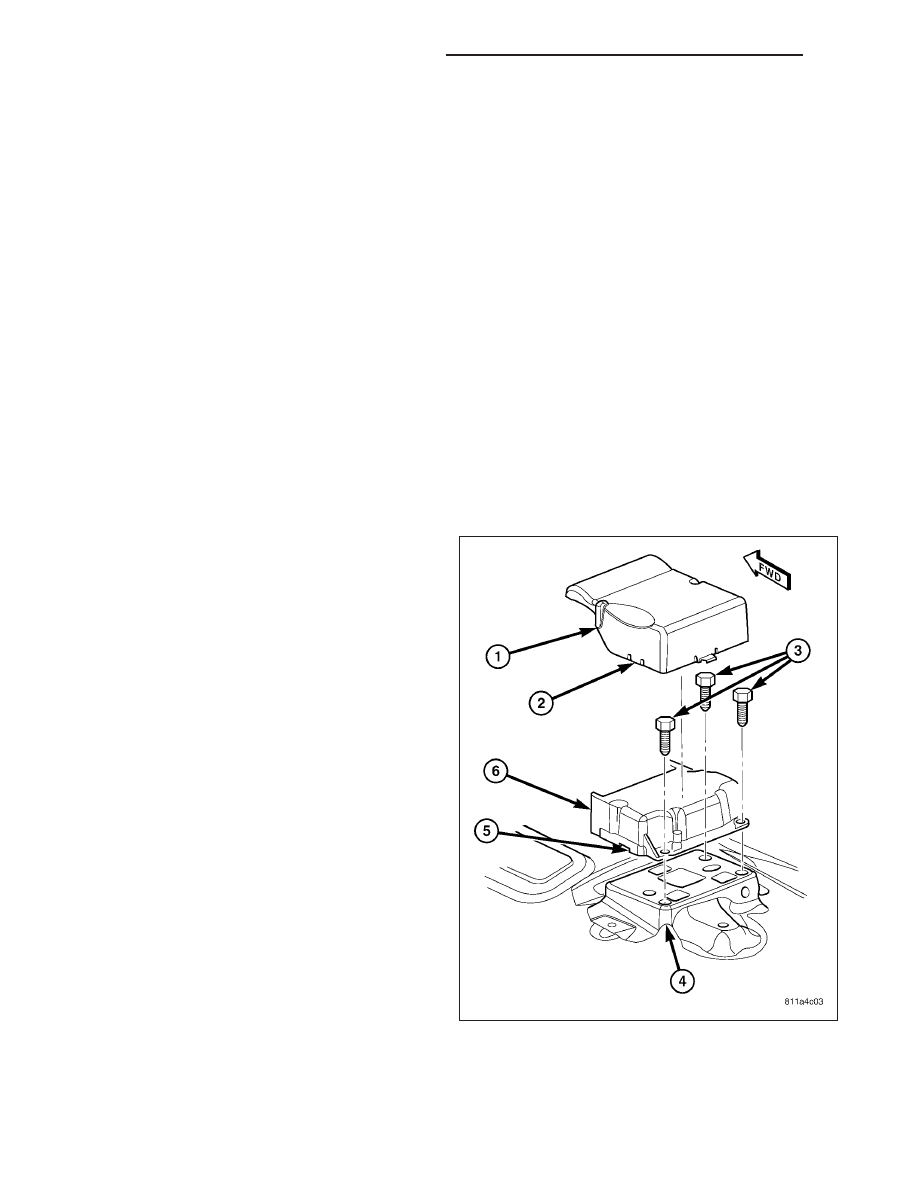Jeep Liberty KJ. Manual - part 237

INSTALLATION
WARNING: To avoid personal injury or death, on vehicles equipped with airbags, disable the supplemental
restraint system before attempting any steering wheel, steering column, airbag, occupant classification sys-
tem, seat belt tensioner, impact sensor, or instrument panel component diagnosis or service. Disconnect
and isolate the battery negative (ground) cable, then wait two minutes for the system capacitor to discharge
before performing further diagnosis or service. This is the only sure way to disable the supplemental
restraint system. Failure to take the proper precautions could result in accidental airbag deployment.
WARNING: To avoid personal injury or death, never strike or drop the airbag control module, as it can dam-
age the impact sensor or affect its calibration. The airbag control module contains the impact sensor, which
enables the system to deploy the supplemental restraints. If an airbag control module is accidentally
dropped during service, the module must be scrapped and replaced with a new unit. Failure to observe this
warning could result in accidental, incomplete, or improper supplemental restraint deployment.
CAUTION: On vehicles equipped with the Occupant Classification System (OCS), never replace both the Air-
bag Control Module (ACM) and the Occupant Classification Module (OCM) at the same time. If both require
replacement, replace the OCM first. Then perform the supplemental restraint verification test including an
ignition-On time of at least one minute before replacing the ACM. Both the ACM and the OCM store OCS
calibration data, which they transfer to one another during the first minute of ignition-On time after one of
them is replaced. If both modules are replaced at the same time, an irreversible fault will be set in both
modules. If the data transfer is not allowed sufficient time to complete between modules (at least one
minute of ignition-On), an irreversible fault will be set in the module requiring the data.
1. Carefully position the Airbag Control Module (ACM)
(6) to the ACM bracket (4) on the floor panel trans-
mission tunnel. When the ACM is correctly posi-
tioned, the arrow on the ACM label will be pointed
forward in the vehicle and the locating pin on the
bottom of the right ACM mounting flange will be
engaged into the locating hole in the ACM bracket.
2. Install and tighten the three screws (3) that secure
the ACM to the ACM bracket that is welded onto
the floor panel transmission tunnel. Tighten the
screws to 11 N·m (8 ft. lbs.).
8O - 254
RESTRAINTS - SERVICE INFORMATION
KJ